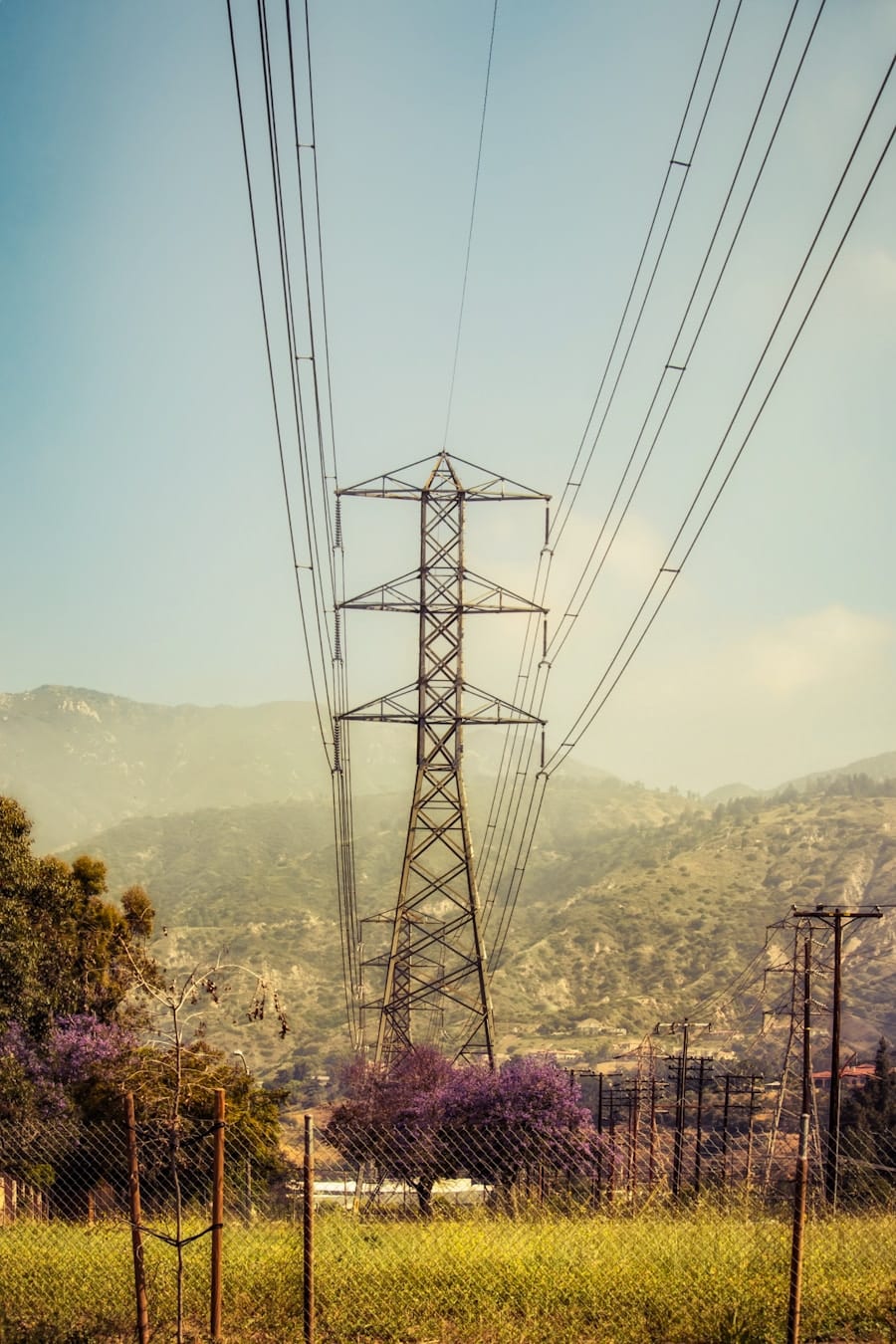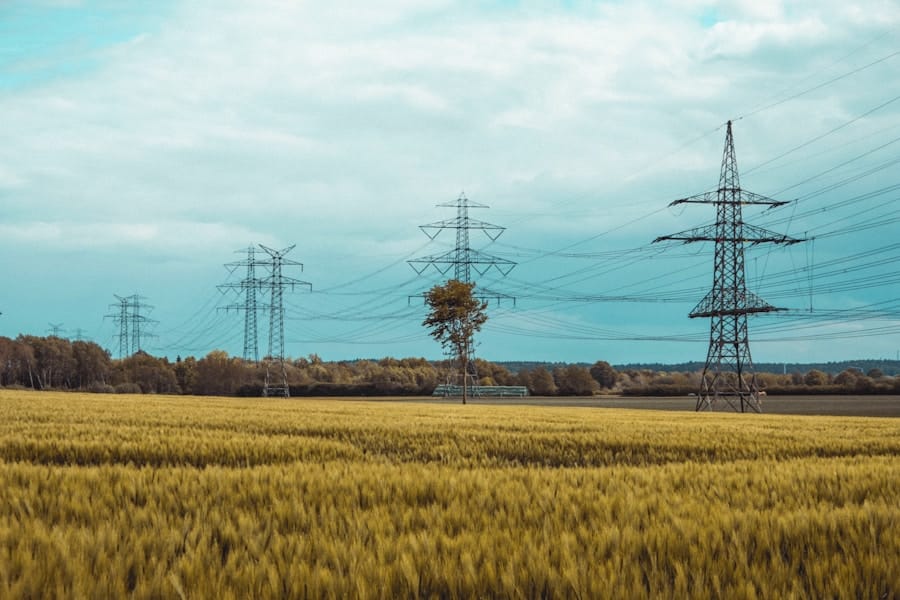The intersection of artificial intelligence (AI) and energy grid optimization represents a transformative shift in how energy systems are managed and operated. As the global demand for energy continues to rise, coupled with the increasing complexity of energy sources, the need for efficient and reliable energy management has never been more critical. AI technologies, with their ability to analyze vast amounts of data and learn from patterns, are poised to revolutionize the way energy grids function.
By leveraging machine learning algorithms, predictive analytics, and real-time data processing, AI can enhance grid performance, reduce operational costs, and improve overall energy efficiency. Energy grids are intricate networks that require constant monitoring and adjustment to maintain balance between supply and demand. Traditional methods of managing these grids often fall short in addressing the dynamic nature of energy consumption and generation, particularly with the growing integration of renewable energy sources.
AI offers innovative solutions that can optimize grid operations by predicting fluctuations in energy demand, managing distributed energy resources, and enhancing the reliability of power delivery. This article delves into the multifaceted role of AI in optimizing energy grids, exploring its applications in predictive maintenance, demand response, renewable energy integration, grid resilience, energy efficiency, and the challenges that accompany its implementation.
Key Takeaways
- AI plays a crucial role in optimizing energy grids by analyzing data and making real-time decisions to improve efficiency and reliability.
- Predictive maintenance for energy grids is enhanced by AI, which can detect potential issues and schedule maintenance before failures occur, reducing downtime and costs.
- AI is utilized for demand response and load balancing, helping to manage peak demand and ensure a stable supply of energy.
- AI’s impact on renewable energy integration and forecasting is significant, as it can accurately predict renewable energy generation and optimize its integration into the grid.
- AI enhances grid resilience and reliability by quickly identifying and responding to potential disruptions, minimizing downtime and improving overall grid performance.
The Role of AI in Predictive Maintenance for Energy Grids
Predictive maintenance is a proactive approach that leverages AI to anticipate equipment failures before they occur, thereby minimizing downtime and maintenance costs. In the context of energy grids, this involves using machine learning algorithms to analyze data from sensors embedded in various components of the grid, such as transformers, substations, and transmission lines. By continuously monitoring the health of these assets, AI can identify anomalies and predict when maintenance is required, allowing operators to address issues before they escalate into significant problems.
For instance, a utility company might deploy AI-driven predictive maintenance systems that analyze vibration data from transformers. By establishing baseline performance metrics and identifying deviations from these norms, the system can alert maintenance teams to potential failures. This not only extends the lifespan of critical infrastructure but also enhances grid reliability by reducing the likelihood of unexpected outages.
Moreover, predictive maintenance can lead to significant cost savings; according to a report by McKinsey & Company, companies that implement predictive maintenance can reduce maintenance costs by 10-40% while improving equipment availability.
Utilizing AI for Demand Response and Load Balancing
Demand response (DR) programs are essential for maintaining grid stability, especially during peak consumption periods. AI plays a pivotal role in optimizing these programs by analyzing real-time data on energy usage patterns and predicting future demand. By employing advanced algorithms, utilities can dynamically adjust energy supply based on consumption forecasts, incentivizing consumers to reduce or shift their energy usage during peak times.
This not only alleviates stress on the grid but also helps in managing costs associated with peak power generation. For example, an AI system can analyze historical consumption data from residential and commercial customers to identify trends and predict when demand will spike. During these peak periods, the system can send alerts to consumers through smart devices, encouraging them to reduce their usage or shift it to off-peak hours.
Additionally, AI can facilitate load balancing by coordinating distributed energy resources such as solar panels and battery storage systems. By intelligently managing these resources in real-time, AI ensures that supply meets demand efficiently, thereby enhancing overall grid performance.
AI’s Impact on Renewable Energy Integration and Forecasting
The integration of renewable energy sources into existing power grids presents unique challenges due to their intermittent nature. AI technologies are instrumental in addressing these challenges by improving forecasting accuracy and optimizing the use of renewable resources. Machine learning models can analyze weather patterns, historical generation data, and other relevant factors to predict solar and wind energy output with remarkable precision.
This capability allows grid operators to better plan for fluctuations in renewable generation and adjust conventional power generation accordingly. For instance, a wind farm operator might utilize AI-driven forecasting tools that analyze meteorological data to predict wind speeds and turbine output several hours or even days in advance. This information enables operators to optimize their energy dispatch strategies, ensuring that they can meet demand while minimizing reliance on fossil fuel-based generation.
Furthermore, AI can facilitate the integration of distributed energy resources by coordinating their operation within the grid. By intelligently managing these resources based on real-time conditions, AI enhances the overall stability and efficiency of the energy system.
Enhancing Grid Resilience and Reliability with AI
Grid resilience refers to the ability of an energy system to withstand and recover from disruptions, whether they are caused by natural disasters or human-made incidents. AI contributes significantly to enhancing grid resilience by providing tools for real-time monitoring, anomaly detection, and rapid response to emergencies. By analyzing data from various sources—such as weather forecasts, sensor readings, and historical incident reports—AI systems can identify vulnerabilities within the grid and recommend preventive measures.
For example, during severe weather events like hurricanes or snowstorms, AI can analyze real-time data to predict potential outages based on historical patterns of similar events. Utilities can then deploy resources more effectively to areas likely to be affected, ensuring a quicker response time when outages do occur. Additionally, AI can assist in post-event analysis by evaluating the effectiveness of response strategies and identifying areas for improvement.
This continuous learning process enhances the grid’s ability to adapt to changing conditions and improves overall reliability.
AI’s Contribution to Energy Efficiency and Conservation
Energy Efficiency and AI: A Sustainable Combination
Energy efficiency is a critical component of sustainable energy management, and AI plays a vital role in promoting conservation efforts across various sectors. By analyzing consumption patterns and identifying inefficiencies within systems, AI can provide actionable insights that lead to reduced energy usage without compromising comfort or productivity.
### Optimizing Energy Consumption in Buildings
Smart buildings equipped with AI-driven energy management systems can optimize heating, cooling, lighting, and other systems based on occupancy patterns and external conditions. For instance, an office building may implement an AI-based system that learns from employee behavior over time. By adjusting lighting and temperature settings based on occupancy levels detected through sensors, the system can significantly reduce energy consumption during unoccupied hours.
### Personalized Energy Management through AI
Additionally, AI can facilitate demand-side management initiatives by providing consumers with personalized recommendations for reducing their energy usage based on their historical consumption data.
Addressing Challenges and Risks in AI-supported Energy Grid Optimization
While the potential benefits of integrating AI into energy grid optimization are substantial, several challenges and risks must be addressed to ensure successful implementation. One significant concern is data privacy and security; as AI systems rely heavily on vast amounts of data from various sources, safeguarding this information against cyber threats is paramount. Utilities must invest in robust cybersecurity measures to protect sensitive consumer data while ensuring compliance with regulations governing data privacy.
Another challenge lies in the complexity of integrating AI technologies with existing infrastructure. Many legacy systems may not be compatible with modern AI solutions, necessitating significant investments in upgrades or replacements. Additionally, there is a need for skilled personnel who can develop and maintain these advanced systems; a shortage of talent in the field of AI poses a risk to successful deployment.
To mitigate these challenges, collaboration between utilities, technology providers, and regulatory bodies is essential to establish best practices for implementation while fostering innovation in the sector.
Future Outlook: The Potential of AI in Advancing Sustainable Energy Grids
Looking ahead, the potential for AI to advance sustainable energy grids is immense. As technology continues to evolve, we can expect even more sophisticated applications of AI that will further enhance grid optimization efforts. The ongoing development of smart grids—integrated systems that utilize digital communication technology—will create new opportunities for AI-driven solutions that improve efficiency and reliability while accommodating an increasing share of renewable energy sources.
Moreover, as electric vehicles (EVs) become more prevalent, AI will play a crucial role in managing their integration into the grid. Smart charging solutions powered by AI can optimize charging times based on grid conditions and consumer behavior while supporting load balancing efforts during peak demand periods. The convergence of AI with emerging technologies such as blockchain could also revolutionize how energy transactions are conducted within decentralized energy markets.
In summary, the future landscape of energy grids will be shaped significantly by advancements in AI technology. As utilities embrace these innovations, they will not only enhance operational efficiency but also contribute to a more sustainable energy future that prioritizes resilience, reliability, and environmental stewardship. The journey toward fully optimized energy grids powered by AI is just beginning; its trajectory promises exciting developments that will redefine how we produce and consume energy in the years to come.
A related article to “How AI Is Supporting Energy Grid Optimization for Sustainability” can be found on Hacker Noon, which covers a range of topics across the tech sector. This article may provide further insights into the latest advancements in artificial intelligence and its applications in various industries, including energy grid optimization. To read more about this topic, you can visit Hacker Noon.
FAQs
What is AI?
AI, or artificial intelligence, refers to the simulation of human intelligence in machines that are programmed to think and act like humans. This includes tasks such as learning, problem-solving, and decision-making.
How is AI supporting energy grid optimization?
AI is being used to optimize energy grids by analyzing large amounts of data to identify patterns and trends, predict energy demand, and optimize energy distribution. This helps to improve the efficiency and sustainability of energy grids.
What are the benefits of using AI for energy grid optimization?
Using AI for energy grid optimization can lead to reduced energy waste, lower operational costs, improved reliability, and increased use of renewable energy sources. This ultimately contributes to a more sustainable energy system.
How does AI help with sustainability in energy grid optimization?
AI helps with sustainability in energy grid optimization by enabling more efficient use of energy resources, reducing carbon emissions, and supporting the integration of renewable energy sources into the grid. This contributes to a more sustainable and environmentally friendly energy system.
What are some examples of AI applications in energy grid optimization?
Examples of AI applications in energy grid optimization include predictive maintenance of grid infrastructure, real-time energy demand forecasting, optimization of energy storage systems, and smart grid management. These applications help to improve the overall performance and sustainability of energy grids.



